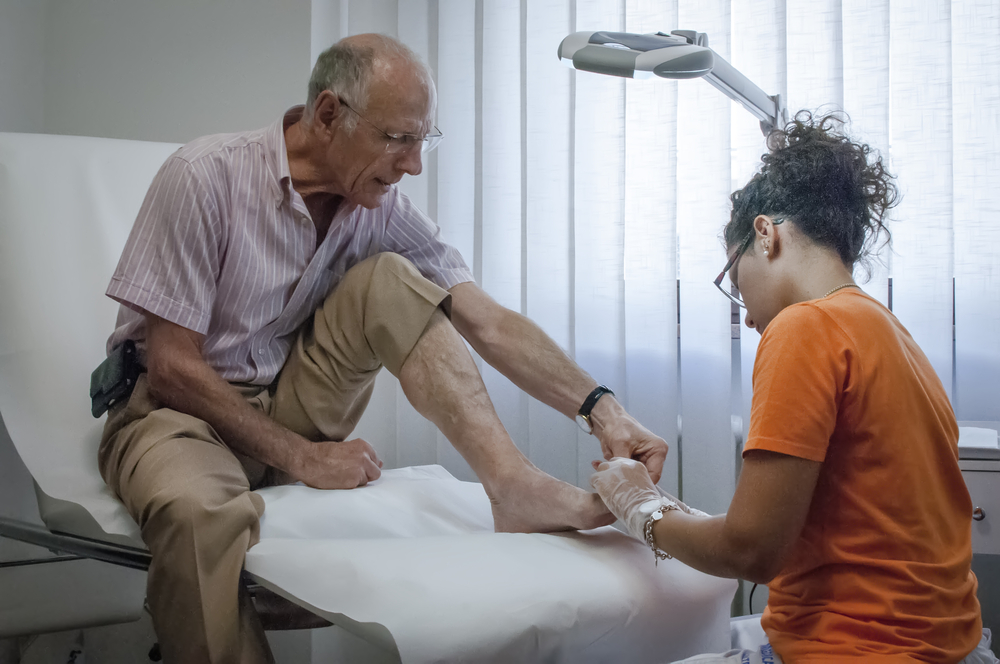Medical Billing Software for Podiatry Practices

Through the power of automated workflows and billing shortcuts, the best medical billing softwares can save your podiatry practice hours on complicated billing and coding work. However, the wrong medical billing system can further muddle these processes. How can podiatrists ensure they are paying for the best software for their practice?
Podiatrists need specific features out of their medical billing software that are built to simplify their lives. These can be automations, integrations or even the option for outsourced billing depending on the state of your practice. After reading this article, you will be able to identify a handful of medical billing features that can make your life as a podiatrist much easier.
DME and Supplies Billing
Podiatrists will often need access to DME, prosthetics, orthotics and other supplies for their patients. Because these assets are frequently needed, find a medical billing software that houses all of the current and relevant billing codes for these supplies. Ideally, these codes can auto populate into charts to save time on typing and cut down on mistakes for such a common data entry task.
Insurance Eligibility Checks
Tracking down insurance eligibility information for your patients can be a major time suck for your administrative staff. Instead of spending time on the phone with insurance providers, you could have a software that automatically checks insurance coverage statuses for you. This not only makes billing easier, it also streamlines the check-in process. Whether you are using an iPad, iPhone or desktop, your system could quickly identify insurance eligibility, and you can get on with the appointment.
Billing Software Integrated with EHR
Your medical billing software should work hand-in-hand with your electronic health record. Like peanut butter and jelly, these systems are useful on their own but are always better together. Medical billing software is more efficient if it can pull relevant information directly from the EHR.
When a podiatrist is entering the codes for their patient’s ingrown toenail care, that should be translated from the patient’s chart into the billing side of your software. Providers also need access to a library of codes that can be pulled into charts to streamline billing.
Automated Claims Submissions
Submitting claims in a timely manner is the first step to getting paid, so why leave that process open to human error? Podiatrists can save time and improve efficiency by using a medical billing software that automates the claims submission process.
Moreover, payment and denial information should then flow cleanly into your EHR, so that all of the information you need can be found in one place. Having the peace of mind that your claims will be sent out every day gives you more space to focus on delivering the highest quality care to your patients.
Billing Profiles
Every healthcare provider comes across certain procedures more often than others. For commonly used billing codes, your medical billing platform should allow you to create billing profiles. Billing profiles are a powerful time-saving tool that will automatically populate the billing information for specific types of encounters that you have established.
For example, if your podiatry clinic frequently sees patients for wart removal, you can set up a billing profile with the codes needed for those treatments. On top of the time you can claim back from repetitive data entry, you will also likely find fewer errors in your billing because of this tool.
Options for RCM Services
Though you may be more than capable of handling medical billing internally, an even more prosperous time may come where your patient volume is outpacing your staff’s bandwidth. When your podiatry practice reaches that point, you should consider outsourcing your billing to a revenue cycle management team.
RCM professionals are uniquely qualified to handle your revenue processes, and they can even improve the efficiency of your billing. Ideally, your medical billing vendor would have an RCM upgrade available to you, and that team should provide complete transparency into how they are conducting their work.
Some solo practitioners may not have growth in mind when they launch their practice which is perfectly reasonable, but for those who anticipate expansion for their podiatry practice, an option for RCM is useful to keep in your back pocket.
Conclusion
The podiatry industry was valued at $4.3 billion in the US in 2020. As a podiatrist, you should not let your medical billing system prevent you from claiming your piece of that pie in a timely manner. Podiatry coding and billing can be complicated, but with the right software, it doesn’t have to be.
The search for medical software is difficult, especially for solo providers. Many podiatrists are operating practices as a one-person-band, so their time is incredibly valuable. By using this article as a starting point in your search, you will have a better chance of finding medical billing and coding software that makes revenue management easier.
If you are interested in learning more about medical billing software and how it can improve your revenue processes, schedule a demo with one of our DrChrono product experts.